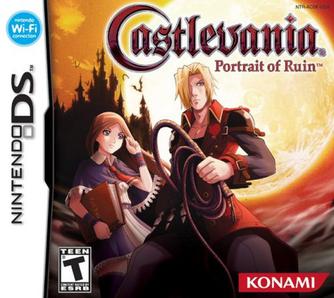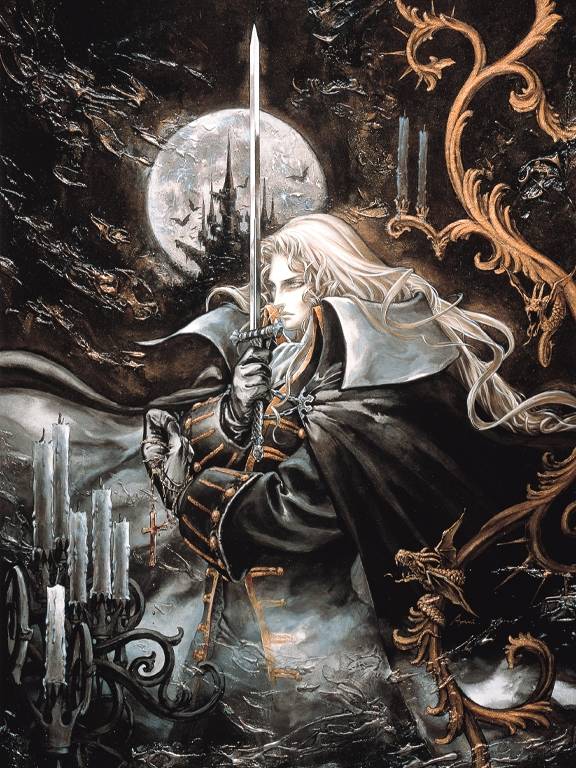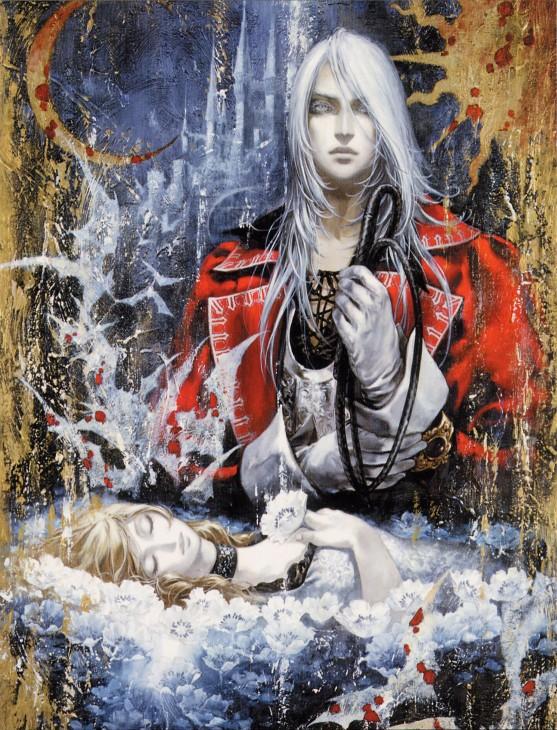I'm not a huge fan of Koji Igarashi's Castlevania games. I'm not saying they're not enjoyable... but how many fucking times can you re-use sprites from Super Castlevania IV? We're talking about a game that was 15 years old when Portrait of Ruin came out, and there were still re-used art assets. Of course, this alone does not make a game bad.
However, it makes a series incredibly stagnant when there's little to no true evolution of a play-style between games. Let's talk about Igarashi a bit before we get into this..
The Castlevania series used to be one that changed. Simon's Quest was a departure from the original game, while Castlevania III returned to the original style but added multiple characters. Super Castlevania IV gave greater control over the whip, and Rondo of Blood went back to the old style of just being plain hard, but having some diversity in the levels in the form of different endings. They're relatively small steps, but they're something new and directly affect how the game plays. Igarashi was first involved in Castlevania through Rondo of Blood. It's unclear what exactly he did with the game, other than popping in and making some recommendations. He's listed under special thanks in the credits.
When the PlayStation and Nintendo 64 came around, Konami started development of two Castlevania games. One was Castlevania 64 (the 64 is actually not part of the title, it's just Castlevania), which is honestly a fantastic and overlooked game (largely due to its camera). The other was Castlevania: Symphony of the Night. Symphony of the Night was seen as a spin off, and was handed off to Igarashi. If you know anything about those two games, you know that Castlevania 64 ended up being considered the spin-off. I think Igarashi only had two SNES games, though.
If you're familiar with Metroid games or modern Castlevania games, you probably know the word Metroidvania. I find this to be a misnomer. Metroid did the adventure/RPG game style first. Castlevania did it later. I'm not accusing it of being a rip off. It's just that Castlevania is a Metroid-style game, and I'm not sure why Castlevania has a claim to fame for becoming a name for a genre, and I love Castlevania.
Anyways, Symphony of the Night was a damn fine game and certainly one of the best. I've beaten it several times. My problem with Igarashi is that every game after this was the same. There was Lament of Innocence and Curse of Darkness, but they tried to have the same exploration aspects while being mechanically similar to Devil May Cry. Nothing original. Every Castlevania game up until The Adventure ReBirth and Lords of Shadow were Metroid style. I don't think any of them are particularly bad games, but there's a breaking point.
There really weren't any key gameplay differences in any of the games, unless you count weapons as major differences. With how these games play, I don't. They were all just "go through castle, get weapons, level up, kill Dracula."
Thankfully, Portrait of Ruin changed things up a bit.
Portrait of Ruin is a somewhat direct sequel to Castlevania: Bloodlines. Bloodlines is a great title for Sega Genesis that seems to get overlooked a lot, likely due to its soul crushing difficulty. Bloodlines did a few things that make it stand out and also make it surprising that it survived Igarashi's purge of the Castlevania timeline. Bloodlines actually made Bram Stoker's original Dracula novel part of the Castlevania canon. Bloodlines features a character called John Morris, who is the son of Quincy Morris from the book. Bloodlines has two playable characters, John Morris and Eric Lecarde. Morris has somehow come into possession of the Vampire Killer and Lecarde uses a fucking trident.
He's also very pretty.
Portrait of Ruin follows up on this in a few ways. You play as Jonathan Morris, John Morris' son (really inspired, Igarashi), and Charlotte Aulin. At the same time.
You can switch between the two characters, or use them both simultaneously with the AI taking control of one character. You have some control over the other character, as you can summon them to attack and assist in moving objects and other things. It adds a unique dimension to things, but you'll mostly be using Jonathan as he's the more powerful character. Charlotte focuses on magic and can't take too much of a beating. It may not seem like much, but it's a change to the Igarashi formula that was heavily welcomed after so much of the same.
The other change to the game (that's similar to Bloodlines as well) is that the game doesn't take place solely in Dracula's castle. The castle serves as sort of a hub, with magic paintings leading to other worlds where the majority of the game takes place.
Again, really inspired Igarashi.
There's eight of these paintings, with the maps being paired off in twos and using similar art assets. This adds a lot of meat to the game, instead of there being only one castle. Igarashi's last real Castlevania game, Order of Ecclesia, had areas outside of the castle, but they weren't as elaborate for the most part. There's also quests that you can take, with the objectives spread across the different worlds.
Since the game plays exactly the same as other Igarashi Castlevania titles, there's not a whole lot to say about that. I will say that this game has a really odd difficulty curve. You'll have a pretty hard time up until a boss battle that gives you access to the final four paintings. After that, you're relatively overpowered. Past this point, the only real challenge is Dracula and it's probably the best Dracula fight of the Igarashi titles. It's actually a challenging fight, and you won't be able to rely on level grinding alone. The fight requires skill, which is something that didn't come up too often in Igarashi games.
The story is serviceable, with some terribad "DON'T TALK ABOUT MY FATHER" dialog frequently coming from Jonathan. He's not a particularly likable character. The supporting cast is interesting, and makes it worth seeing out.
Something I really don't like about the game is the art style. Once Castlevania made the transition from Gameboy Advance to Nintendo DS, they switched to a really stereotypical anime art style. Dawn of Sorrow was really in your face about it, and there wasn't a great reaction to it. Portrait of Ruin scaled it back, but it's still present.
I'm not a huge fan of the heavily gothic art style of the other games under Igarashi's reign, but it does add an air of drama to everything.
Everyone looks... a bit effeminate.
Seriously.
I guess that's better than anime, though. It looks like it took more than 20 minutes to do. You could hang it on your wall if you listened to a lot of Tool.
In the end, I had a lot of fun with Portrait of Ruin. It took a step to change things up for the first time in a long time, and it turned out well.
The Score: 8.5/10









No comments:
Post a Comment